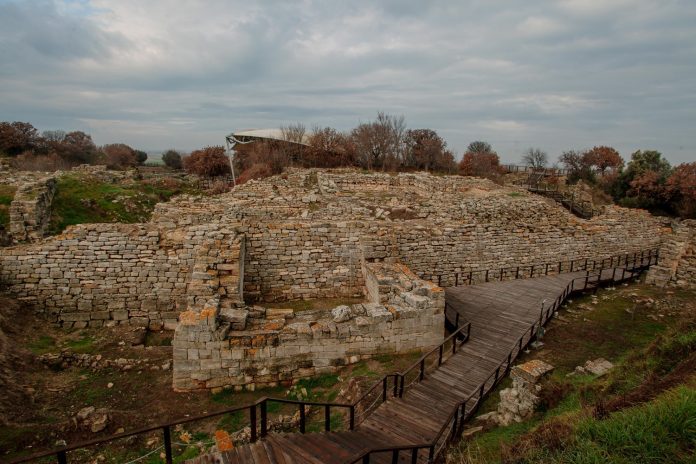Archaeologists during the excavations of Ancient Troy in Turkey have found new evidence of a large -scale violent conflict of the Bronze Age, which coincide with the description of the Trojan War known as Homer's poem. These findings can confirm that the legend has a historical basis.
During this year's excavations near the palace and fortifications of the city, researchers found dozens of clay and stone shells for slings, arrowheads, fragments of burned buildings and buried human remains. All of these artifacts testify to the sudden catastrophe, fierce fighting and mass death of people, which corresponds to the description of the siege of the city, which Homer posted in his poem.
The head of the excavation Professor Rustem Aslan of Chanakkala said that a large number of ancestral stones in a small area indicate intense battles. Archaeologists date these findings from 1600 to 1200 BC - a time that is traditionally considered a period of Trojan War, dated about 1184 BC.
Traces of fire, wreckage of weapons and burial without rituals indicate that the city was destroyed as a result of an unexpected and cruel storm, not a gradual decline. This evidence was first found in 2024, and this year's excavations supplemented and clarified the previous conclusions.
Other important finds include bone tips for punching armor, gambling, which may have belonged to soldiers, and rare military instruments. They are all found within a large fortified complex identified in Hittite texts as a Vilus.
Although many historians doubted the reality of the Trojan War, new archaeological data again focus on the possibility of a real conflict that could become the basis of a legend. Famous ancient historians of Herodotus and Eratophen considered the war a historical fact, and the Roman poet Virgil described in his "Aeneid" the escape of the surviving Trojans.
So far, archaeologists have not found evidence of the existence of a legendary wooden horse, assuming that it could be an artistic image or a metaphor. However, military artifacts and traces of fire indicate a large -scale attack with probably tragic consequences.
The project "Heritage for the Future", under the auspices of the Turkish Ministry of Culture, focused on the study of key structures of the city, in particular the market, defense walls and the royal residence. Archaeologists are convinced that the period between 1500 and 1200 BC. It is key to understanding how myth and history could be overwhelmed.


